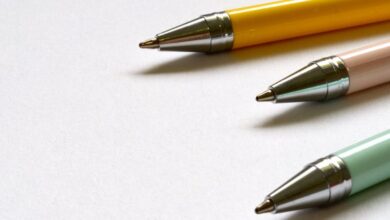What Makes a Good Set of Colored Markers for Work
Colored markers are essential tools in various work environments, from design studios to offices. Their versatility allows for creativity and clarity in presentations, brainstorming sessions, and artistic projects. However, not all markers are created equal. Understanding what makes a good set of colored markers can significantly enhance productivity and satisfaction in your work.
Quality of Ink
The quality of ink is paramount when choosing colored markers. Good markers should have vibrant, consistent colors that dry quickly to prevent smudging. Look for markers with high-quality, fade-resistant ink that maintains its vibrancy over time. Water-based inks are often easier to clean and more environmentally friendly, making them a popular choice. Alcohol-based inks, on the other hand, offer richer colors and are ideal for blending and layering, especially in artistic applications. Depending on your specific needs, consider what type of ink would best suit your tasks.
Variety of Colors
A good set of colored markers should offer a wide range of colors. The more colors available, the more creative freedom you have. Look for sets that include not just primary colors but also shades, tints, and complementary colors. This variety allows for greater expression and the ability to convey different moods or ideas. If you are working on projects that require specific color palettes, ensure that the set you choose includes colors that align with your needs.
Tip Styles and Sizes
The tip style and size of the markers play a crucial role in their functionality. Different tasks may require different tip types, ranging from fine tips for detailed work to broad tips for bold strokes. Dual-tip markers, which feature both a fine point and a chisel tip, provide versatility for various applications. Consider your typical work tasks and choose a set that offers a range of tip styles to cater to your needs.
Comfort and Ergonomics
Comfort is often overlooked but is vital when working with markers for extended periods. A good set of colored markers should have an ergonomic design that fits comfortably in your hand. Look for markers with soft grips or triangular shapes that prevent fatigue during long sessions of drawing or writing. The weight of the markers also matters; they should feel balanced and not overly heavy or light. A comfortable grip enhances control and precision, making it easier to produce quality work.
Durability and Longevity
Durability is a key factor in the value of colored markers. A good set should withstand frequent use without drying out quickly or losing its pigment. Check for markers with sealed caps to prevent ink from drying out and those that can be stored horizontally without leaking. Additionally, consider the overall construction of the markers. High-quality materials ensure that the tips do not fray easily and that the body of the marker can endure the rigors of daily use.
Price and Value
While it may be tempting to go for the cheapest option, investing in a good set of colored markers pays off in the long run. Higher-quality markers often provide better performance, longevity, and vibrancy. When evaluating price, consider the overall value offered by the set, not just the initial cost. A more expensive set might save you money in the long term if it lasts longer and performs better than a cheaper alternative. Look for sales or bulk buying options to get the best deal without compromising on quality.
Making the Right Choice
Choosing the right set of colored markers can elevate your work and enhance your creative expression. By focusing on ink quality, color variety, tip styles, ergonomics, durability, and overall value, you can find a set that meets your specific needs. Whether you are sketching designs, annotating documents, or brainstorming ideas, a good set of colored markers can make all the difference. Investing time in selecting the right tools ensures that your creative process remains joyful and productive.







